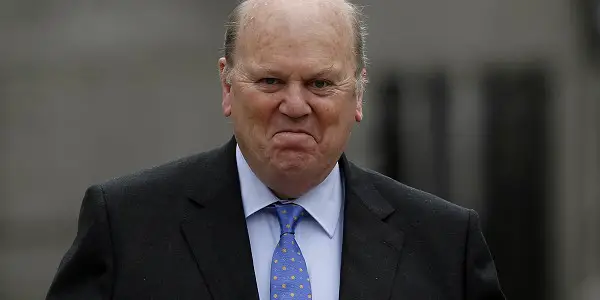Tax from big business and cash from the sale of shares in rescued banks have been credited with helping the Government to balance its books.
The state collected 45.6 billion euro in tax last year – 3.3 billion euro more than the forecast at the start of the year, the Department of Finance said.
Finance Minister Michael Noonan, in his first public appearance since undergoing hospital treatment over Christmas, said the priority was now to cement recovery and avoid boom and bust cycles of the past.
“In terms of performance against profile, while corporation tax accounts for the bulk of the increase, it is encouraging that there were also strong performances from income tax and VAT. This is further evidence of the economic recovery we have witnessed in 2015,” he said.
“The next step in our recovery is to put in place our medium-term strategy which will spread the recovery to all sectors of the economy and all regions throughout the country.
“We are determined to avoid the boom and bust cycles of the past.”
The Exchequer report for the year revealed the books were 62 million euro in the red.
This compared with a deficit of 8.1 billion euro for 2014, with the numbers buoyed by the sale of preference shares in Allied Irish Banks and a stake in Permanent TSB.
The department said that when these one-off bonuses are taken out, the underlying deficit for last year was about 3.4 billion euro.
On the tax take, big business paid in 6.8 billion euro in corporation taxes, VAT soared to just short of 12 billion euro and income taxes to 18.3 billion euro.
The department said the total tax take was 3.3 billion euro ahead of forecasts and in December alone the take was 11% ahead.
Officials noted the overall numbers are being driven by more people at work and increasing wages combined with more consumer spending, while corporation tax is 49% up on 2014.
Brendan Howlin, Minister for Public Expenditure and Reform, said: “Against a background of strong growth in tax revenue, we were in a position to make additional funding available by way of supplementary estimate to support key services, social supports and increased capital investment.”